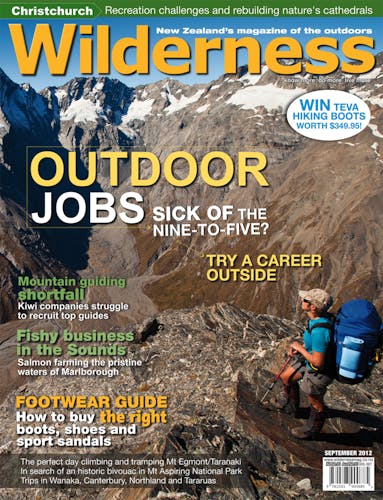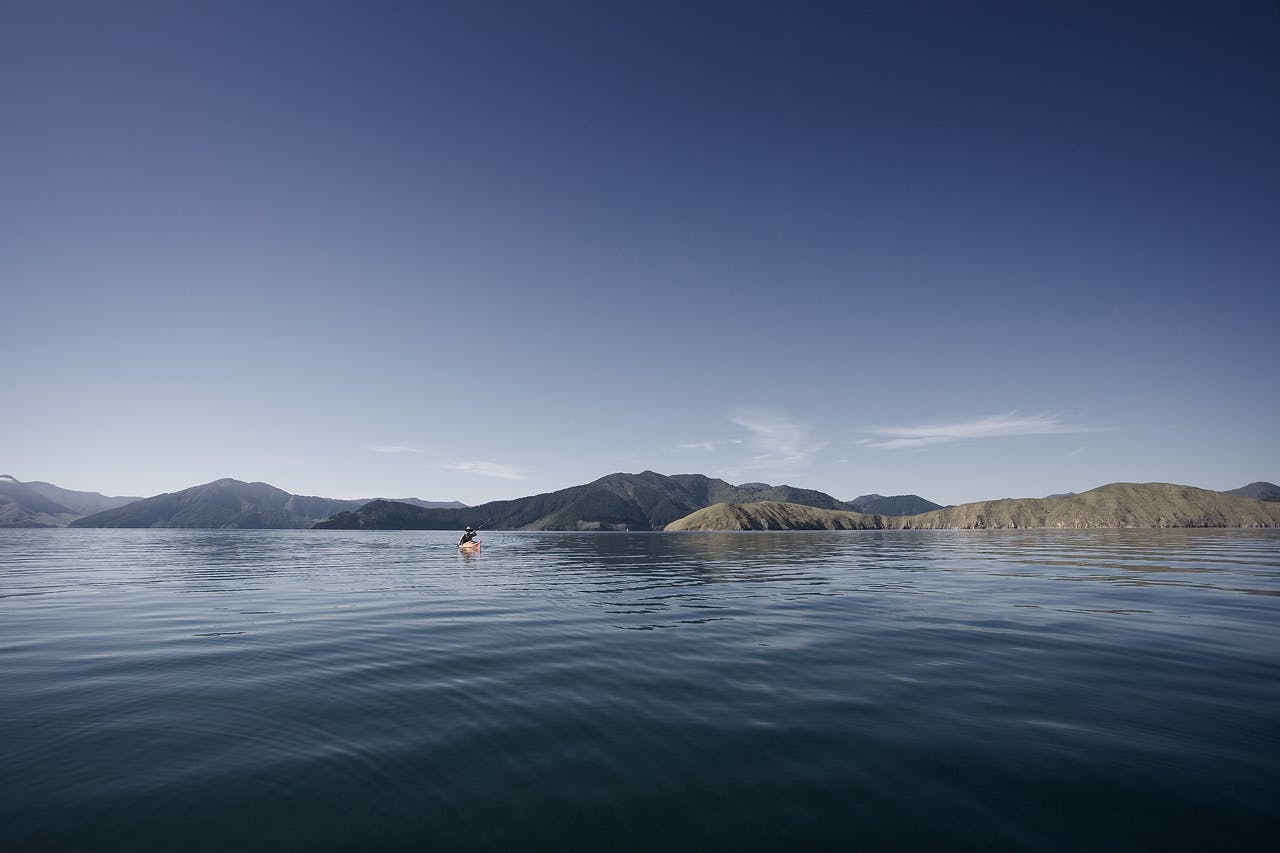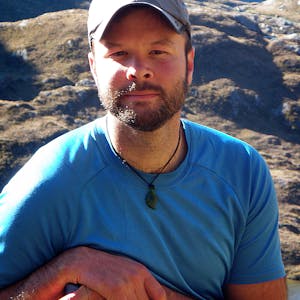Sometimes idyllic conditions lead to the trickiest situations. It’s a kayaking truism that’s now being applied to the entire Marlborough Sounds thanks to a multi-national backed aquaculture expansion. Mark Banham reports
In a kayak two kilometres off Cape Jackson in the Marlborough Sounds things become very simple. In my case last year it looked like this: you have 20km to paddle, past 10km of sheer sea cliffs with no place to land, with a northerly front predicted to arrive in the afternoon and the tide turning unfavourably in four hours.
If you don’t make it past the cliffs before the tide turns and the storm front arrives, then there’s a good chance you’ll get driven onto the cliffs. It’d probably be a survivable experience, but it’d mean scrambling up the rocks and radioing for a rescue while watching the kayak and its contents being masticated into oblivion by the relentless waves. Not exactly an enticing option.
In those circumstances, your perception of the world changes a lot; your to-do list shrinks drastically and staying afloat and making headway become the top and only priorities. But simultaneously you’re afflicted by a crippling tunnel vision; things like listening for radio broadcasts, stopping for food and looking after the blistering case of sunburn you’re developing simply fall outside of your attention. It seems when things get a little desperate, the first thing you lose is your perspective.
I didn’t realise at the time but coincidentally, in the very stretch of water I’d just paddled an environmental stoush was brewing between conservationists and the aquaculture industry with both sides struggling to make headway under difficult circumstances and each accusing the other of failing to see the bigger picture.
So what’s going on down in the Sounds?
New Zealand King Salmon (NZKS), the owners of the Regal Salmon brand, which is 51 per cent owned by the Rimbunan Hijau Group, a multi-national corporation based in Malaysia, is proposing to install nine new salmon farms, occupying an area of 206ha (about the same area as 294 rugby fields) in the Marlborough Sounds, eight of which would be in areas where marine farming is prohibited by the Marlborough Sounds Council’s Resource Management Plan – including a 90ha allocation in Port Gore.
NZKS hopes to claim the spaces for a period of 35 years. In return, the company says there are huge benefits to be had for New Zealand and for Marlborough. According to a report prepared for the company by an external economics consultancy, the new fish farms should create $194 million of ‘total value added’ (basically GDP) annually and sustain 1600 additional jobs in the New Zealand economy from 2021.
Although the expansion will mean over-ruling the Marlborough Sounds Council’s Resource Management Plan, they say the plan was designed to manage mussel leases and has left no room for finfish farms, which need deep, swift-flowing and cool waters – basically they’ve been left with no alternative.
King Salmon say their operation is ‘sustainable and renewable’ and claim that in 25 years of operation they’ve never had a credible environmental issue reported.
The company says most of the additional production will be destined for overseas markets, so it will bring in desperately needed export dollars and go a long way towards the aquaculture industry’s government-supported goal to become a billion-dollar export industry by 2025.
NZKS maintains that the ‘silent majority’ supports their proposal. A claim they back up by market research consultancy BUZZ Channel which showed 54 per cent of people in Marlborough support the company’s plans while only 14 per cent oppose.
Late last year the Minister for Conservation, Kate Wilkinson, deemed the proposal to be of national significance and referred it to an Environmental Protection Agency Board of Enquiry – a fast-tracked nine-month process that leaves no avenue for appeal except on a point of law.
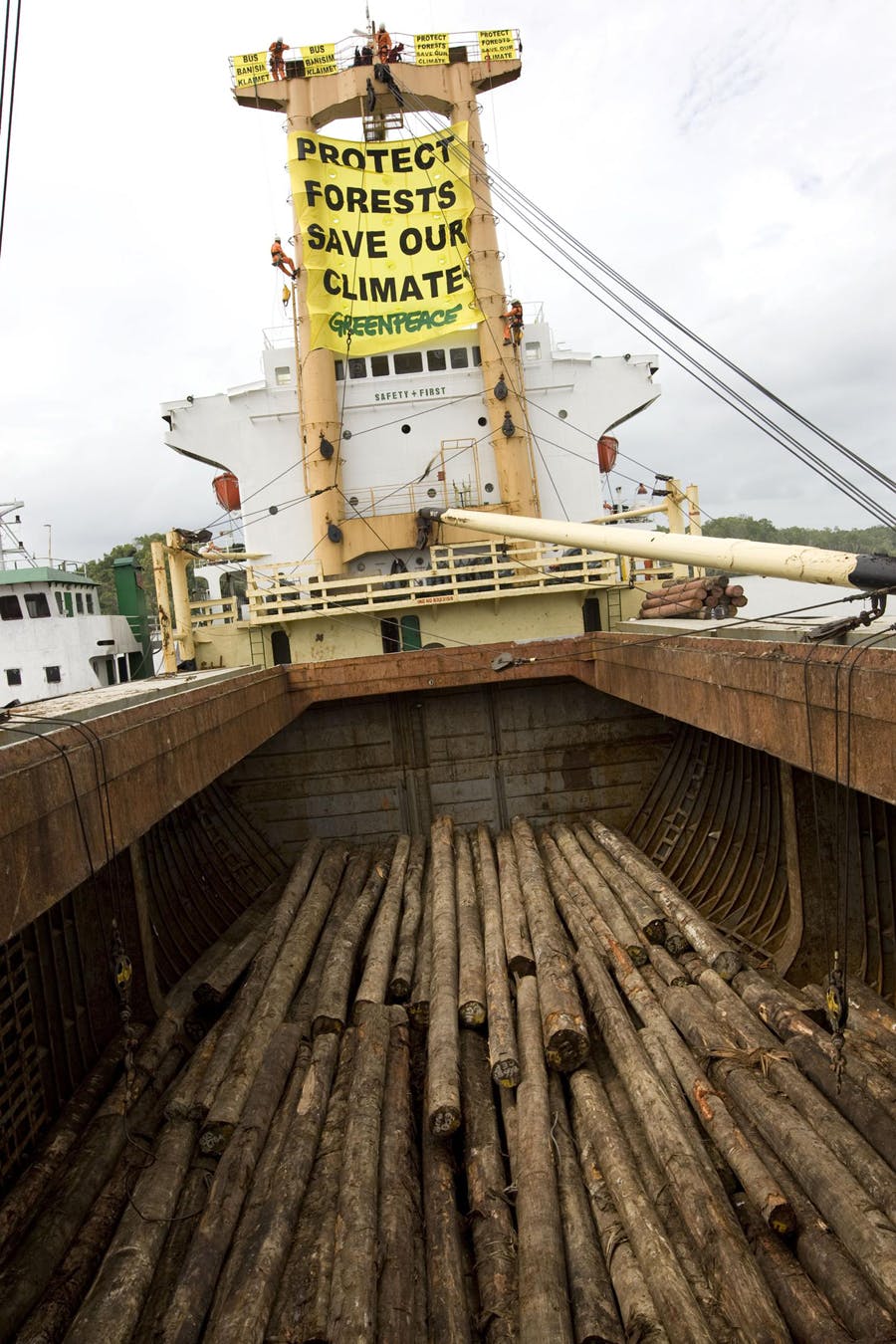
Greenpeace activists hang a banner reading ‘Protect Forests Save Our Climate’ from the Harbour Gemini ship and halt the loading of illegally logged trees from the rainforests of Papua New Guinea.
The dissenting view
King Salmon paints a rosy picture of the proposal, but there’s no shortage of people ready to point out the scheme’s drawbacks. Most vocal among them is Danny Boulton, who heads up Sustain Our Sounds (SOS) – a group created specifically to oppose the NZKS expansion.
Boulton, who lives and works in the Sounds running an eco-tourism business, says the National Government’s support of the NZKS scheme, and the aquaculture industry’s goal of tripling in size to become a billion dollar export earner, is short-sighted and that “they’ve backed the horse before assessing the racetrack”.
He says the pollution released from these salmon farms, or “piggeries of the sea” as he calls them, will taint the waters of the Marlborough Sounds, damage fish habitat, affect public enjoyment of this unique landscape as well as damaging the tourism industry and New Zealand’s clean, green image.
According to SOS, the new Salmon farms will release the equivalent quantity of nitrogen into the Marlborough Sounds ecosystem as the sewage of half a million people. When combined with the existing agricultural runoff and sewage from urban areas it could easily overload the ecosystem leading to dead zones, algae blooms and worse.
They say no comprehensive assessment of the water column impact of finfish farming has ever occurred in the Marlborough Sounds. According to SOS, King Salmon’s environmental monitoring has been limited to the areas in and immediately around their existing fish pens and has been solely focused on the health of their livestock.
Then there are the social concerns. Environmental lawyer Sue Grey points out that if this proposal goes ahead, it will set some very concerning precedents.
“The government says that overseas investment legislation doesn’t apply to aquaculture, but this simply raises the question of why not? The public is concerned about farm land being sold to foreigners. Surely it is even more concerning if coastal space is being given away free of charge to companies with majority foreign ownership and profiteering investors.
“The legal position is complicated by the Marine and Coastal Areas Act which replaced the controversial Foreshore and Seabed Act last year. Under the new law, neither the Crown nor anyone else can own the coastal area and it is supposed to be preserved for the public. This raises the question of ‘How the government can give away something it doesn’t own?’.”
What is perhaps most concerning from a legal point of view, Grey says, is the notion of overruling local government and giving away public property for free.
Grey says if King Salmon is successful in overruling the Marlborough Sounds Council’s Resource Management Plan and commercialising spaces set aside for public use, it will mean that no coastal space is sacrosanct and that an aquaculture “lolly scramble” seems inevitable.
King Salmon’s budget for this exercise, according to Grey, is around $6 million ($500,000 of which was effectively donated by the government) compared to about $400,000 for SOS.
It’s a daunting battle, but SOS believes it has the support of the New Zealand community. It’s a belief that was vindicated by the public’s submissions to the EPA regarding the plan – of the 1267 submissions, two thirds opposed the expansion plans.
SOS supporter Karen Marchant was one such dissenting voice. She says she can’t understand why issues like the sale of the Crafar farms created such a controversy, whereas the public seems unruffled about King Salmon’s plans.
“We are about to give away public water space which is currently being used by Kiwis and visitors who love the Sounds for recreational purposes for free to a majority foreign-owned company,” she says. “I don’t understand why the public haven’t clicked about what’s going on here.”
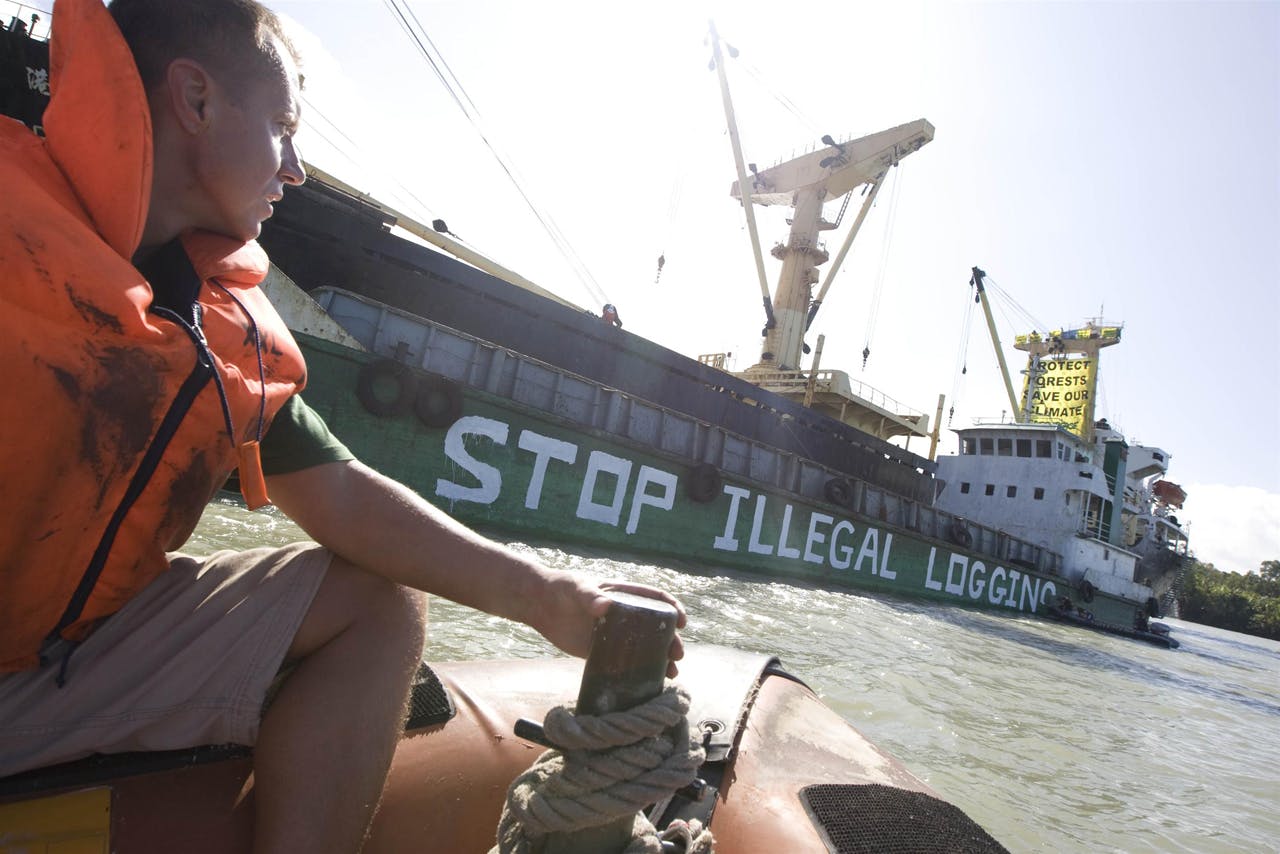
Greenpeace activists paint ‘Stop Illegal Logging’ onto the side of a logging barge and also prevent its cargo from being loaded onto the ‘Harbour Gemini’ cargo ship, in Paia port. These forests are being felled by Turama Forest Industries – a group company of Malaysian logging giant Rimbunan Hijau. In 1995, the Papua New Guinea government granted 1.7 million hectares as a logging extension to Turama Forest Industries the extension was almost 10 times bigger than the original concession. The timber permit for this new concession, called Turama Extension is valid for 35 years (until 2030).
Throwing mud and comparing faeces
King Salmon chose to speak to Wilderness indirectly through statements issued by their public relations consultancy. They described SOS’s claims as scaremongering and “based on emotion not fact”.
As to the pollution claims, King Salmon’s spokesperson said: “Frankly SOS is being extremely spare with the truth. You simply cannot compare human faeces with salmon nutrients. Human waste contains pathogens that cause disease or illness. Humans unfortunately also dispose of hair dyes, sump oil and who knows what via the land-based system. The marine environment efficiently breaks down fish faeces. It mostly comprises nitrogen and the amount produced by the salmon farms is minute compared to the amount that enters the Sounds via Cook Strait. In any event, the mussel farms in the region absorb most of the nitrogen produced by the salmon farms.
“And when SOS says x-thousand tonnes of feed is pumped into the farms, it fails to mention that most of that is eaten by the fish. It’s in the company’s interest not to waste feed.”
In a pre-recorded statement, NZKS CEO Grant Rosewarne said rather than damaging tourism, the salmon farm expansion “has to have a positive effect”.
“Food tourism is a growing trend and we think we can help the great work that’s already been done with Marlborough Sauvignon Blanc and mussels,” he said. “In the future this region will be equally famous for its salmon. In fact, it already is.”
Rosewarne said although the plans call for more than 200ha to be set aside, the actual farms will only cover 17 surface hectares. “We’re talking about 0.01 per cent [of the Marlborough Sounds]. I’d hardly call that industrialisation.”
As to the environmental degradation, Rosewarne said: “What we produce here is sustainable and renewable and our success is based on maintaining the beautiful environment of the Marlborough Sounds.”
Never work with children or animals
There’s an old showbiz chestnut ‘never work with children or animals’ that’s been a hard learned lesson for many a star. It seems both have a knack for doing the worst possible thing at the worst possible time – and it seems salmon are no exception. A few months before NZKS was to take their case to the EPA, fish at their Waihinau farm in Pelorous Sound began to mysteriously die en masse.
King Salmon has yet to share the exact death rate, so far only described it as “unusually high”. SOS supporters described the quantity as “truck and trailer loads” and “perhaps some hundreds of tonnes”.
No doubt a collective shiver went down the spines of both SOS and NZKS. If the wild fish population proved to be susceptible to whatever killed the salmon, then the results could be disastrous for all concerned. The salmon farm’s positioning in swift-flowing, deep water makes them the perfect distribution mechanism for a new disease.
Shortly afterwards, Biosecurity New Zealand and King Salmon agreed to issue a ‘red biosecurity alert’ on the site, restricting the movement of equipment on or off the farm and requiring them to cease harvesting fish and dispose of dead fish appropriately.
Samples sent to the Primary Industries Ministry and to overseas laboratories for testing failed to determine the cause of the deaths. NZKS did their best to put a positive spin on the situation trumpeting the good news that the fish are “free of a range of diseases” but it did little to assuage many people’s fears.
Historically, salmon farms have had a bad run with diseases: In 1972 an outbreak of the gyrodactylus parasite, spread from salmon farms in Norway and devastated the country’s wild salmon populations. In 1984 Norway’s salmon were struck again, this time by infectious salmon anaemia – eighty per cent of the fish in the outbreak died. Chile has been grappling with the problem since 1990 with a major flare up in 2007, combined with the Global Financial Crisis causing the closure of many farms. Meanwhile, in Canada, recent studies estimate that sea lice infestation resulting from farms will cause the local pink salmon populations to fall by 99 per cent within their next four generations.
Critics of the aquaculture industry like Greenpeace say intensive farming away from the balancing influence of natural predators inevitably requires the use of chemicals and drugs to control the spread of pathogens. Those measures are effective, but not perfect and so disease epidemics are inevitable.
NZKS claim that New Zealand’s aquaculture is different. In their consumer literature they say, ‘Because of its isolation, New Zealand is uniquely free of all of the serious pathogenic diseases that can affect salmon, therefore New Zealand King Salmon can farm in a natural and wholesome way’.
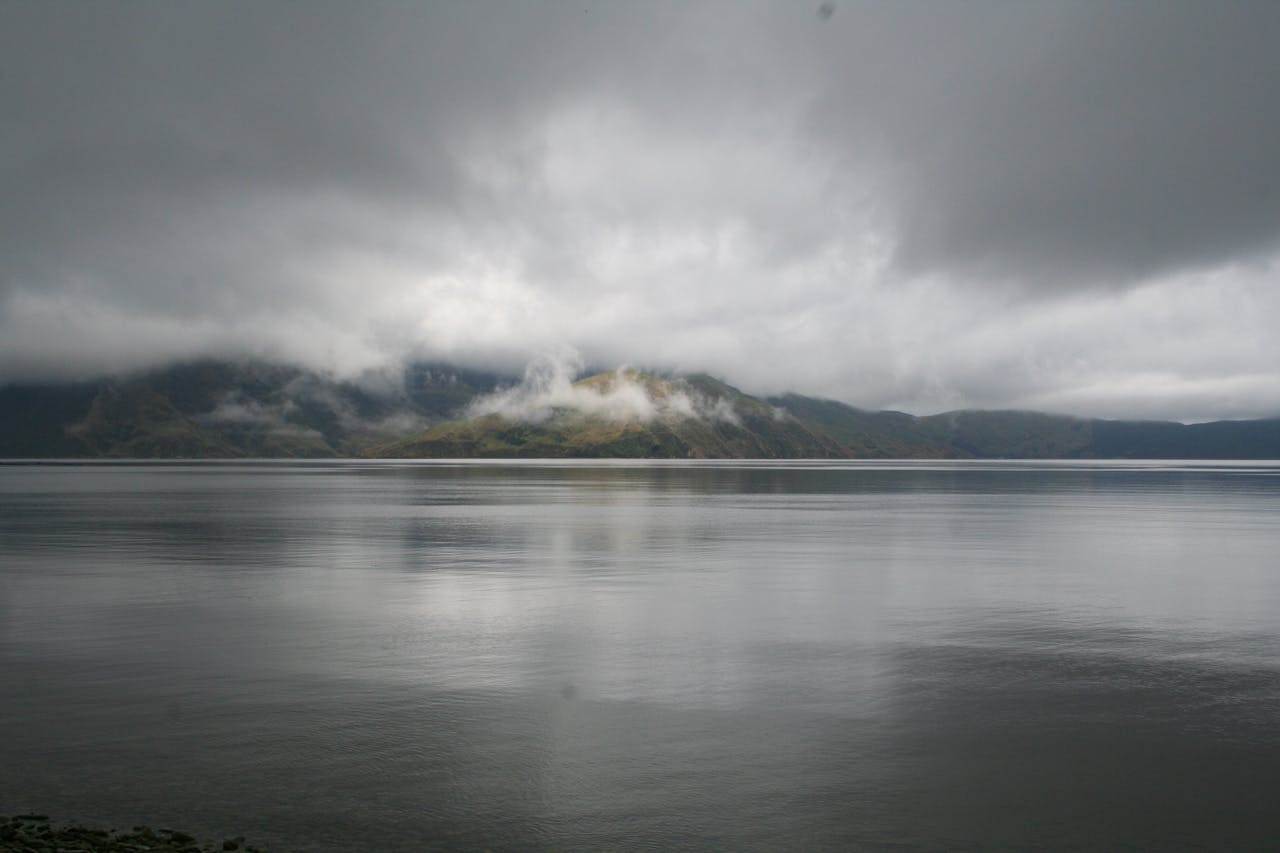
Port Gore, one of the Sounds’ most remote and unspoilt bays, 90ha of which may soon be set aside for salmon farming. Photo: Karen Marchant
Life in the fast track with the EPA
The EPA Board of Inquiry system was designed, among other things, to reduce the time required to approve ‘nationally significant’ aquaculture proposals. It’s designed to make a decision in nine months that had previously required as much as a decade of appeals in various courts.
Despite the ‘streamlined’ form of the EPA process, the nine-month effort has undoubtedly put a tremendous strain on both parties. King Salmon, which is footing the bill for much of the exercise, has watched its costs balloon from an estimated $2million dollars at the outset to six and now out to eight million – with absolutely no guarantee of any return on their investment.
Speaking with Fairfax New Zealand, NZKS’s Grant Rosewarne described the SOS campaign as “damaging” and said: “I fear for the future of primary production and prosperity in New Zealand.
“SOS slings mud at New Zealand King Salmon, hoping it will stick, while forcing us to incur ever higher costs to provide even more expert advice.”
Likewise, Sustain our Sounds has now spent most of this year running a full time campaign based solely on volunteer services, donations from the public and recently a little help from the government’s Environmental Legal Assistance Fund.
As the case rolls on, with more experts and lawyers bringing forward more arguments and more information, the whole affair has begun to take on a Byzantine level of complexity. It remains to be seen whether the process will strike an amiable balance between environmental and economic concerns.
The 30 day period for public submissions has now closed. The final EPA decision is expected by the end of December 2012. If you’d like to learn more about the case visit www.epa.govt.nz.





